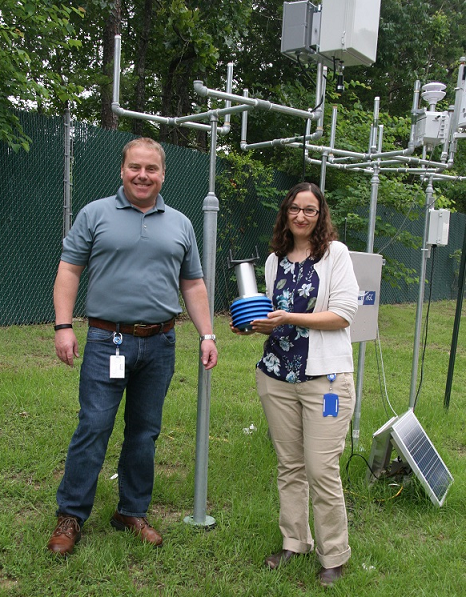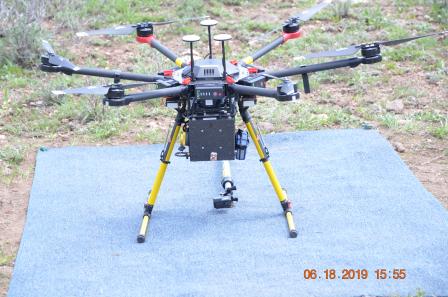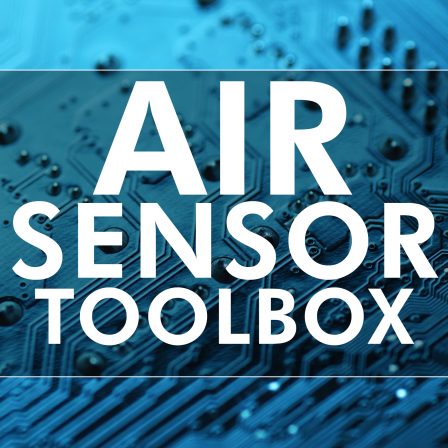Ambient Air Quality Source Measurement and Emissions Factors Research
 Air quality management requires an understanding of the type of air pollutants emitted by various sources from on-road vehicles, large industrial facilities, and power plants to smaller sources such as residential heating and asphalt paving.
Air quality management requires an understanding of the type of air pollutants emitted by various sources from on-road vehicles, large industrial facilities, and power plants to smaller sources such as residential heating and asphalt paving.
Research is characterizing the physical and chemical properties of air pollutants emitted from combustion sources, which is needed for air quality regulation and policy determinations and to understand the potential health and environmental effects of combustion emissions. Scientists are investigating a wide variety of combustion emissions sources including those from the transportation sector, commercial and industrial sectors, and household and domestic energy sectors.
Science is also conducted to develop emissions inventories, which are critical for states to implement air pollution control strategies. Complete, well referenced and quality-assured emissions profiles of air pollution sources are used to populate emissions databases and support EPA models that are used by states to demonstrate compliance with the National Ambient Air Quality Standards.
Research is being conducted in the following areas:
- Next Generation Emission Measurement (NGEM) Research for Industrial Fugitive Leaks
- Mobile Source Emissions, Exposure and Mitigation
- Wildland Fire Sensors Emissions and Measurement
- Air Sensor Evaluation and Development
Next Generation Emission Measurement (NGEM) Research for Fugitive Air Pollution
 EPA researchers with the SPod air sensor system.
EPA researchers with the SPod air sensor system.
The Next Generation Emissions Measurement (NGEM) research team is working with industry, state and local regulators, communities, and technology companies to develop innovative technical approaches for detecting and fixing fugitive industrial volatile organic compound (VOC) emissions. Benefits of detecting and fixing these unanticipated emissions in a timely manner include safer working environments, cost savings through reduced product loss, reduced air pollution and improved public health protection.
Related Links:
Mobile Source Emissions, Exposure and Mitigation
EPA, states, tribes and local air quality agencies are conducting research to develop, implement and evaluate tools and resources that address near-source air pollution impacts and exposures. The focus of this work is near sources such as highways, railways and ports that may have high local impacts on air quality. The results from this research are helping to improve air quality dispersion models, air measurement techniques and best practice guidance for reducing or mitigating exposure to these sources.
The research is building on previous studies that expanded understanding of how roadside solid and vegetative barriers affect near-road air quality. The results are enhancing existing models and exposure assessment techniques used in air quality regulation and community decision making.
Related Links:
- Near Roadway and Near Source Air Pollution Research
- Science Matters: Researchers Assess Roadside Vegetation Barriers with a Suite of Air Monitors
Wildland Fire Measurement and Emissions Research
 The Kolibri air sampling system attached to a small unmanned aerial system.
The Kolibri air sampling system attached to a small unmanned aerial system.
To better understand the air quality impacts from wildfires and prescribed fires, research is needed to develop new monitoring capabilities for measuring pollutants from smoke. Public health officials and air quality managers also need more data on smoke emissions for modeling purposes.
Research is focused on the development and evaluation of sensors that measure fine particulate matter (PM2.5), the main component of smoke that is a health concern. Researchers are deploying and testing air sensors during wildfires and prescribed fires to determine their ability to measure PM2.5, black carbon, carbon monoxide and volatile organic compounds (VOCs) from wildland fires. The research aims to fill the gaps in air quality data in areas impacted by smoke that do not have nearby regulatory monitors. It will provide information on the efficacy of using rapidly deployable devices for fire incident response. This work has supported the AirNow Fire and Smoke Map Sensor Data Pilot, which includes PurpleAir sensor data. These sensors are also used to understand the infiltration of smoke indoors and to identify best practices for improving indoor air quality during wildfire smoke episodes.
Researchers are also conducting field studies to determine the performance of air monitoring instruments during smoke events, better understand the chemical aging of smoke, and evaluate models used to forecast where smoke from wildland fires will travel. The Mobile Ambient Smoke Investigation Capability (MASIC) study, launched in May 2019, is collecting air measurements from both EPA-designated reference and non-regulatory instruments to determine their performance capabilities during wildfires.
Researchers are working to obtain more emissions factors from wildland fire smoke to better capture the impact of the type of fuel burned and combustion conditions on emissions. Additionally, researchers are assembling an emission factor database for burning structures and vehicles, which are a potentially important contributor to toxic emissions from wildfires in the wildland-urban interface. These data are being added to the National Emissions Inventory for use in forecasting and other modeling activities to understand how smoke from fires can impact air quality.
Technological innovations to measure emissions from wildland fires are under development and advancing understanding of emissions factors from smoke. Portable systems using state-of-the-art sensors and other cutting-edge technology are being designed and deployed using unmanned aerial systems to capture representative emissions, including PM2.5, black carbon, carbon monoxide, carbon dioxide, nitrogen oxides, polycyclic aromatic hydrocarbons and VOCs.
One system, used in a June 2019 study, has been successfully deployed to assess emissions from a wildfire-like, tree stand replacement burn in Utah. Related research will assess the effect of prescribed fire dynamics, as affected by ignition patterns, biomass characteristics, and meteorological conditions, on emission factors. This work will be incorporated into a fluid dynamics fire model to produce an emission-predictive capability.
Related Links:
- Wildland Fire Research Overview
- AirNow Sensor Data Pilot for Monitoring Wildfire Smoke Emissions
- Air Emissions Inventories
- Air Sensor Toolbox
- Wildfire Study to Advance Science Partnerships for Indoor Reductions of Smoke Exposures
- Science Matters: Studies Advance Air Monitoring During Wildfires and Improve Smoke Forecasting
Air Sensor Evaluation and Development
EPA researchers and engineers are changing the way we measure and monitor air quality to protect air quality. They are putting low-cost, portable air sensors into the hands of citizens to investigate air quality in their neighborhoods and communities; providing fenceline monitoring and other new and improved ways to monitor nearby sources of air pollutants; and providing new monitoring tools to assist air quality managers with implementing the nation’s air quality standards.
EPA formally focused on the evaluation and development of air sensor technology since 2012, when the Agency created the Air Sensors Roadmap to guide research. That same year, EPA conducted its first workshop on air sensors, which involved many partners and stakeholders inside and outside the Agency interested in the development and use of air sensors. Since then, researchers have conducted extensive field and laboratory studies, partnering with states, communities and tribes to advance air sensor technologies. These contributions are leading to unbiased evaluations of sensor performance and infrastructural support through efforts such as the development of performance targets and testing protocols.
The web-based Air Sensor Toolbox is a primary source of information on EPA’s air sensor-related activities and research.
Related Links:
- Air Sensor Toolbox
- SPECIATE -- EPA's repository of organic gas and particulate matter (PM) speciation profiles of air pollution sources.
- Science Matters: Study Explores Ways to Improve Accuracy of Air Sensors
- Science Matters: EPA Scientists Evaluate Low-Cost Air Sensors in Phoenix, Arizona
- Science Matters: DIY Air Sensor for Educators and Citizen Scientists
- Science Matters: Study Assesses Long-Term Capabilities of Air Sensors

